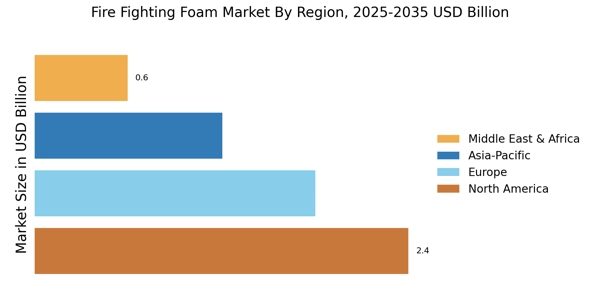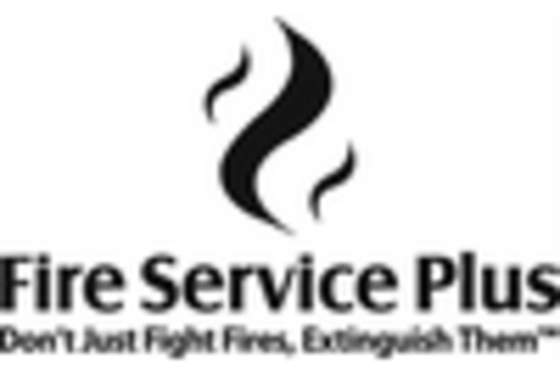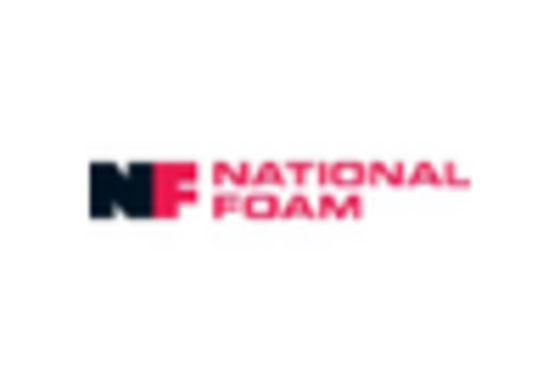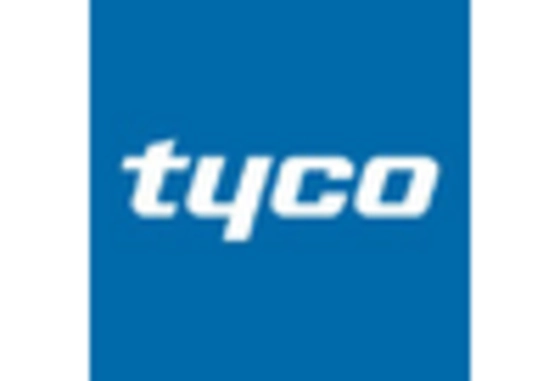Rising Fire Incidents
The increasing frequency of fire incidents across various sectors appears to be a primary driver for the Fire Fighting Foam Market. As urbanization accelerates, the risk of fire hazards in residential, commercial, and industrial settings escalates. Reports indicate that fire incidents have surged by approximately 10% in the last few years, necessitating enhanced fire safety measures. Consequently, organizations are investing in advanced fire suppression systems, including foam-based solutions, to mitigate risks. This trend is likely to bolster the demand for fire fighting foam, as it is recognized for its effectiveness in extinguishing flammable liquid fires. The Fire Fighting Foam Market is thus positioned to experience growth as stakeholders prioritize safety and compliance with fire regulations.
Technological Advancements
Technological innovations in fire fighting foam formulations and application techniques are significantly influencing the Fire Fighting Foam Market. Recent developments have led to the creation of more efficient and environmentally friendly foam agents, which enhance fire suppression capabilities. For instance, the introduction of fluorine-free foams has gained traction due to their reduced environmental impact. The market data suggests that the adoption of these advanced foams is expected to increase by 15% over the next five years. Furthermore, the integration of automated fire suppression systems, which utilize foam, is becoming more prevalent in various industries. This technological evolution not only improves fire safety but also drives the growth of the Fire Fighting Foam Market as companies seek to implement cutting-edge solutions.
Expansion of Industrial Activities
The expansion of industrial activities, particularly in sectors such as oil and gas, manufacturing, and transportation, is driving the Fire Fighting Foam Market. These industries are inherently prone to fire hazards due to the nature of their operations, necessitating robust fire protection measures. The market data indicates that the oil and gas sector alone accounts for a substantial portion of fire fighting foam consumption, with an estimated growth rate of 8% over the next few years. As industrial facilities expand and new projects emerge, the demand for effective fire fighting foam solutions is likely to increase. This trend underscores the critical role of fire fighting foam in safeguarding industrial operations, thereby propelling the growth of the Fire Fighting Foam Market.
Increased Awareness of Fire Safety
The growing awareness of fire safety among businesses and the general public is a crucial driver for the Fire Fighting Foam Market. Educational campaigns and training programs have heightened the understanding of fire risks and the importance of effective fire suppression systems. This heightened awareness is leading to increased investments in fire safety equipment, including foam-based solutions. Market data suggests that the fire safety equipment sector is projected to grow by 12% annually, with fire fighting foam being a significant component of this growth. As organizations prioritize fire safety measures, the demand for reliable and effective fire fighting foam is expected to surge, thereby enhancing the overall Fire Fighting Foam Market.
Regulatory Standards and Compliance
The stringent regulatory frameworks governing fire safety and environmental protection are pivotal in shaping the Fire Fighting Foam Market. Governments and regulatory bodies are increasingly mandating the use of specific fire fighting foams that meet safety and environmental standards. For example, regulations concerning the use of per- and polyfluoroalkyl substances (PFAS) in fire fighting foams have prompted manufacturers to innovate and develop compliant alternatives. The market data indicates that compliance with these regulations is expected to drive a shift towards sustainable foam solutions, potentially increasing the market share of eco-friendly products by 20% in the coming years. As organizations strive to adhere to these regulations, the demand for compliant fire fighting foam solutions is likely to rise, further propelling the Fire Fighting Foam Market.


















Leave a Comment